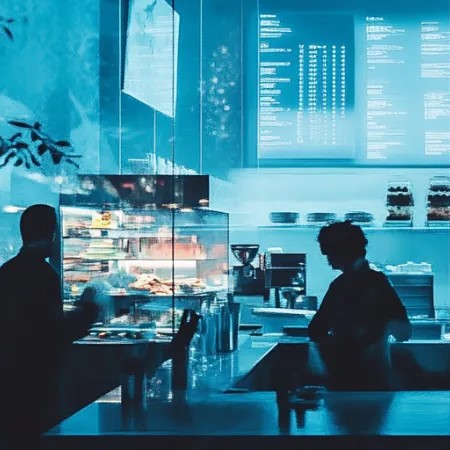How Digital Menu Psychology Drives Sales
Every element of your digital menu influences customer decisions—from color choices to product placement, font selection to pricing strategies. Understanding the psychology behind these decisions can transform your menu from a simple list into a powerful sales tool.
The digital menu mindset
Digital menus create different browsing behaviors than physical ones:
- Shorter attention spans (average 90 seconds)
- Scroll fatigue affects item visibility
- Visual elements carry more weight
- Decision paralysis increases with more options
Strategic menu psychology principles
1. The primacy and recency effect
Customers remember the first and last items they see best. Place your highest-margin items at the top and bottom of menu sections.
2. Choice architecture
Too many options overwhelm customers. Use smart categorization and limit each section to 5-7 items for optimal decision-making.
3. Anchoring effect
The first price customers see sets their expectations. Strategically place a high-priced item early to make other prices seem reasonable.
4. Visual hierarchy
Use size, color, and spacing to guide attention to high-margin items. Make popular and profitable dishes stand out visually.
How RECO applies psychological principles
RECO incorporates proven psychological strategies automatically:
Smart recommendations: Instead of overwhelming customers with choices, RECO curates personalized suggestions based on preferences and order history.
Dynamic pricing display: Show value through smart bundling and upselling suggestions that feel helpful, not manipulative.
Scarcity and urgency: Highlight limited-time offers or low-stock items to create decision urgency.
Social proof: Display popular items and customer favorites to leverage herd behavior.
Color psychology in digital menus
Colors trigger emotional responses that influence purchasing:
- Red: Creates urgency and appetite stimulation
- Green: Suggests freshness and healthy options
- Blue: Builds trust but can suppress appetite
- Orange: Encourages quick decisions and impulse purchases
- Black/Gold: Conveys premium quality and luxury
Typography and readability psychology
Font choices affect perceived taste and quality:
- Rounded fonts suggest sweetness and comfort food
- Angular fonts imply crispiness and intensity
- Script fonts convey artisanal and premium quality
- Sans-serif fonts feel modern and clean
Price presentation strategies
How you display prices affects perception:
- Remove dollar signs to reduce "payment pain"
- Use consistent decimal formatting
- Avoid prices ending in 9 for premium positioning
- Group prices to avoid easy comparison
Cognitive load and decision fatigue
Reduce mental effort required to make decisions:
- Use clear, descriptive names
- Provide helpful icons and visual cues
- Offer smart defaults and recommendations
- Break complex menus into digestible sections
The power of storytelling
Menu descriptions that tell stories sell better:
- "Grandmother's secret recipe" vs. "Traditional lasagna"
- "Farm-fresh vegetables" vs. "Mixed vegetables"
- "Slow-roasted" vs. "Cooked"
- "Handcrafted" vs. "Made"
Mobile-first psychology
Mobile devices create unique psychological constraints:
- Thumb-friendly navigation is essential
- Vertical scrolling feels more natural
- Larger touch targets reduce frustration
- Quick loading prevents abandonment
A/B testing your psychological strategies
RECO enables continuous optimization through:
- Real-time analytics on customer behavior
- Heat mapping of menu interactions
- Conversion tracking by menu section
- Testing different layouts and designs
The ethical approach to menu psychology
Use psychological principles to enhance customer experience, not exploit it:
- Guide customers to items they'll genuinely enjoy
- Provide clear, honest information
- Respect dietary restrictions and preferences
- Create value, not just higher prices
Master the psychology of digital menus, and you'll create experiences that feel intuitive and helpful while naturally driving higher sales. The goal isn't manipulation—it's optimization for both customer satisfaction and business success.
